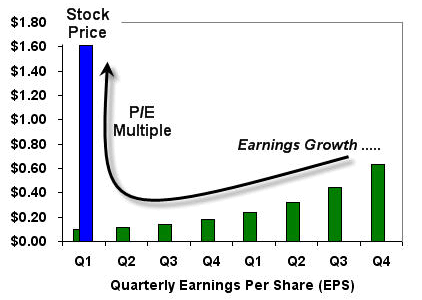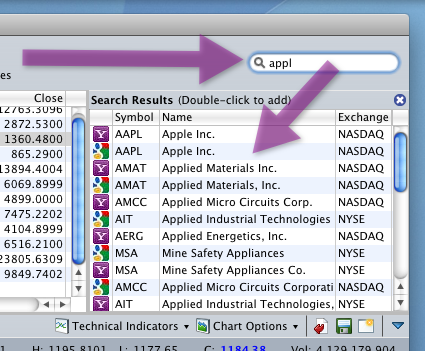What is Capital Adequacy Ratio? Definition of Capital Adequacy Ratio, Capital Adequacy Ratio Meaning


This means that the implications of the leverage ratio for trade finance may not yet be visible. What is regulatory capital in a bank and how much regulatory capital is needed for a given class of banking business is subject to negotiation and discussion with the regulator. So just in case, the regulators have further proposed the leverage ratio as a non-negotiable backstop. The leverage ratio is there to make sure that there is a simple overriding test in the background that no bank can easily work around.
Any framework is robust only when it is modified to address new challenges and risks. Many banks considering the implications of Basel 3 have reduced the scope of trade finance services that they provide, or have even pulled out of trade finance altogether. But if the LC is weighted 100%, then 5 times as much capital has to be committed. This makes the returns look low relative to alternative uses of the bank’s credit lines and capacity; banks do not really want to do LCs on this basis. But, as mentioned above, different types of activities have different weightings in the calculation – called a “credit conversion factor” or CCF.

Balaji is involved with research and fund management at ithought. Bank regulations cover many things – but one of the main requirements is that banks put up “capital” to absorb the credit and other risks that they take. This requirement protects you, me and other ordinary depositors from the risk of losing our money. Capital is the shareholders’ money , and additional money that is specifically raised by the bank which takes any losses before depositors if there are problems.
Income Tax Filing
The solution was to authorize the banking regulator of each country to implement these rules. A new “leverage ratio” that acts as a backstop to all the capital calculations. Banks are regulated because they usually take deposits from ordinary people and must not be allowed to act recklessly with the deposits that they take. Regulations exist principally to protect depositors, and because banks can become systemically important in the economies where they operate. Banks have to maintain a certain portion of deposits with the central bank. It is called the Cash Reserve Ratio and is typically around 3%.
However, as per RBI norms, Indian scheduled commercial banks are required to maintain a CAR of 9% while Indian public sector banks are emphasized to maintain a CAR of 12%. Banks hold more capital than required due to various motives. Myers asserts that adding new equity may transfer value to fixed income claimants, as in a “debt-overhang” situation. However, when the transaction cost reduces, then firms raise the funds through external equity finance .
Further you can also file TDS returns, generate Form-16, use our Tax Calculator software, claim HRA, check refund status and generate rent receipts for Income Tax Filing. ClearTax offers taxation & financial solutions to individuals, businesses, organizations & chartered accountants in India. ClearTax serves 1.5+ Million happy customers, 20000+ CAs & tax experts & 10000+ businesses across India. Additional requirements for systemically important banks, including additional loss absorbency and strengthened arrangements for cross-border supervision and resolution. With an attempt to further enhance the limited scope of the Basel I accord, a revised framework was introduced by the committee in 2004.
The consultation includes a 1-hour session with a financial planner to understand your objectives and needs. Following this, you will receive a quotation for the financial planning services. However, it can be adjusted against the financial planning fee assessed based on the scope of work. Susithra has also completed the CFA Level 1 exam and level X Investment Advisor exams from NISM. An avid reader, she is passionate about personal and behavioral finance.
Urban co-operative banks having deposits up to ₹100 crore have been classified as tier-1 UCBs. The second tier incorporates co-operative banks with deposits more than ₹100 crore and up to ₹1,000 crore. RBI has implemented these guidelines in the country to make bank’s regulation and compliance process in par with the other world banks so that Indian banks remain in a strong position to absorb any financial risk. The measures aim to strengthen the regulation, supervision and risk management of banks. Roshan acquired a bachelor’s degree in BCom with specialization in Finance and Accounting from Vivekananda college prior to working with us.
What is the Basel committee on Banking Supervision?
This guide will help those without previous knowledge to understand the new capital regulations on banks and the specialists to master the more obscured areas from the microscopic details given by the author. The book is a pleasure to read due to the numerous practical examples marking the difference with other books on this topic. Opens up a peerless perspective on how different elements affect a bank’s regulatory capital.
What is in Tier 2 capital?
Under the generally applicable rule, tier 2 capital includes the allowance for loan and lease losses (ALLL)3 up to 1.25 percent of risk-weighted assets, qualifying preferred stock, subordinated debt, and qualifying tier 2 minority interests, less any deductions in the tier 2 instruments of an unconsolidated financial …
It is an international regulatory accord that introduced a set of reforms designed to mitigate risk within the international banking sector. The increase in CRAR requirement is reasonable as these UCBs do not have full capital charge for market risk and currently maintain no capital charge for operational risk, the central bank says. Juan Ramirez has written an excellent book on Basel III capital. It is an excellent handbook going a long way to filling a gap in the literature available on capital adequacy.
Why are banks regulated?
Capital adequacy quickly became the major focus of the Basel Committee’s efforts when the foundations for supervision of globally operating banks were built. The minimum capital requirement was fixed at 8% of risk weighted assets . Under Basel III, the minimum total capital ratio that a bank must maintain is 8% of its risk-weighted assets , with a minimum Tier 1 capital ratio of 6%. The rest can be Tier 2 capital.Risk-weighted assets are used to determine the minimum amount of capital that must be held by a bank, by assigning risk levels to each type of asset. In the case of Dhanlaxmi Bank, the write-down and reclassification of tier-2 bonds in the next few months is expected to adversely affect the bank’s capital adequacy ratio.

He has a wealth of experience in the financial services industry. Amit has spent more than two decades working with banks, asset management companies , and financial advisory firms. His value systems in client service are closely aligned with ithought’s and he joined us in 2015. Gaurav is a qualified Chartered Accountant with 7+ years of experience in capital markets, personal finance, auditing and taxation. He has been with ithought for the last 5 years and is currently part of the PMS team and assists the CIO in managing the company’s Solitaire Fund.
What were the main changes in Basel 3?
Traditionally, it refers to the risk that a lender may not receive the owed principal and interest. This exposes the bank to a variety of risks of default and as a result they fall at times. The committee expanded its membership in 2009 and then again in 2014. The BCBS now has 45 members from 28 Jurisdictions, consisting of Central Banks and authorities with responsibility of banking regulation.
- Under Basel-III norms, banks are supposed to maintain their capital to risk weighted assets ratio at 9% or above.
- Here Tier I capital is a bank’s core capital consisting of shareholders‘ equity and retained earnings; while Tier II capital includes revaluation reserves, hybrid capital instruments, and subordinated term debt.
- In Basel III norms, the Tier 3 capital has been eliminated.
- The capital requirements are adjusted according to prevailing market conditions.
- Balaji is a passionate equity investor with 14 years’ of experience in financial markets.
The impact of excess capital in banks is examined through a partial adjustment approach with unbalanced panel data for listed Indian banks from 2006 to 2017. Findings reveal that banks hold excess capital ratios, and private sector banks actively manage higher capital ratios than the public sector banks. The speed of adjustment for private banks is much higher than for public sector ones, and an inverse relationship between non-performing assets and change in equity capital is found. Following Basel-III norms, central banks specify certain capital adequacy norms for banks in a country. The risk weighted asset refer to the fund based assets such as cash, loans, investments and other assets but their value is assigned a risk weight and credit equivalent amount of all off-balance sheet activitis. The material impacts on trade finance and letters of credit arise from the consolidation of previously off-balance sheet items into the capital charge, and via the leverage ratio.
The draft regulations proposed raising common equity in tier-1 capital to 5.5% of RWA and proposed the minimum tier-1 capital at 7%. Capital distribution constraints will be imposed on an AIFI when capital level falls within this range. However, they will be able to conduct business as normal when their captial levels fall into the conservation range. “Therefore, the constraints imposed tier 3 capital are related to the distributions on AIFIS when their capital levels fall into the range increase as the AIFIs’ capital levels approach the minimum requirements,” it noted. Googletag.cmd.push(function() ); Common equity consists of paid-up equity capital, share premium, statutory reserves, capital reserves, balance in poft and loss account and other disclosed free reserves.
According to RBI, the AIFIs shall implement all three pillars of Basel III captial regulations, considering their role in the Indian financial system. AIFIs are required to maintain a minimum pillar 1 capital to RWA of 9% on an on-going basis other than capital conservation buffer and counter-cyclical captial buffer. Capital Adequacy Ratio is the ratio of banks capital to risk-weighted assets .
TaxCloud (Direct Tax Software)
The more capital that is needed, the less attractive the business becomes. The more capital that is needed, the higher the rates and charges that the bank will want to impose. Basel 3 proposes an unattractive capital treatment for the issuance of letters of credit relative to Basel 2 and relative to the treatment of other types of banking business. Remember the CAR formula, it is calculated as the ratio of Bank Capital to Risk Weighted Assets.
It represents the amount of capital that allows a bank to absorb losses without affecting the interests of depositors. Tier 1 capital consists of shareholders’ equity and retained earnings. Even though the Basel norms are not mandatory in nature, they form the backbone of the risk management structure of banks worldwide.
What are the 3 pillars of Basel 3?
The three pillars of Basel III are market discipline, Supervisory review Process, minimum capital requirement.
During his time here, he has developed a keen interest in value investing and financial planning. He is known for his warmth and is committed to client service. Ajay is also a professional cricketer and is passionate about traveling.
What is in Tier 1 capital?
Tier 1 capital represents the core equity assets of a bank or financial institution. It is largely composed of disclosed reserves (also known as retained earnings) and common stock. It can also include noncumulative, nonredeemable preferred stock.